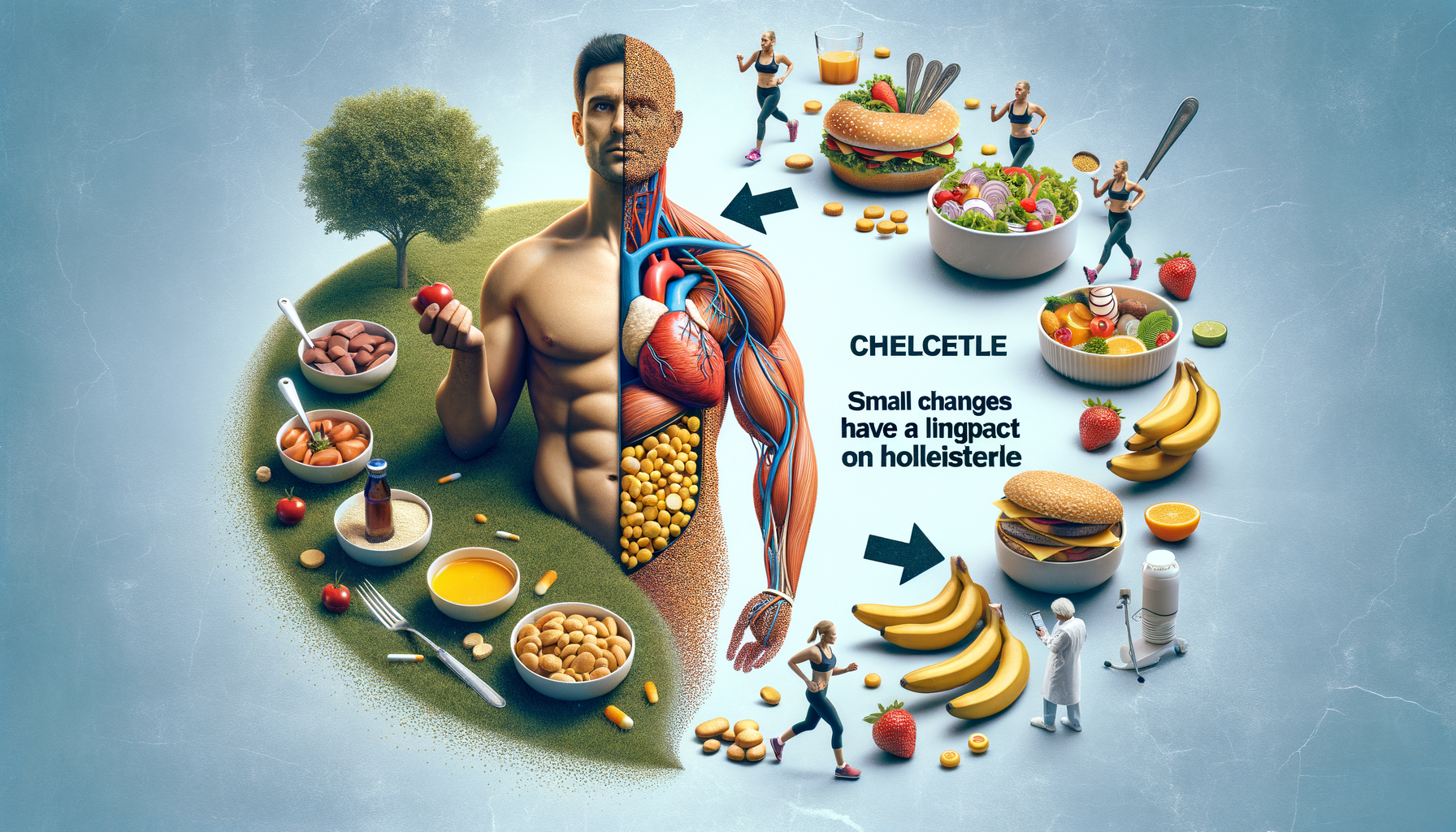
Small Changes. Big Impact on Cholesterol.
Understanding Cholesterol: A Basic Overview
Cholesterol is a waxy substance found in your blood, essential for building healthy cells. However, having high levels of cholesterol can increase the risk of heart disease. It’s crucial to understand that not all cholesterol is harmful. Cholesterol is carried through your bloodstream by lipoproteins, which are classified as either low-density lipoprotein (LDL) or high-density lipoprotein (HDL).
LDL, often referred to as „bad“ cholesterol, can lead to the buildup of plaques in your arteries, which increases the risk of cardiovascular complications. On the other hand, HDL is known as „good“ cholesterol because it helps transport cholesterol away from the arteries and back to the liver, where it is processed and removed from the body.
Maintaining a balance between these two types of cholesterol is vital for heart health. The key is to lower LDL levels while increasing HDL levels through lifestyle changes and, if necessary, medication. Understanding these components provides a foundation for exploring how small changes can have a significant impact on cholesterol levels.
Dietary Habits That Influence Cholesterol Levels
One of the primary ways to manage cholesterol is through diet. Consuming foods that are rich in saturated fats, such as fatty meats and full-fat dairy products, can raise LDL cholesterol levels. Conversely, incorporating foods high in unsaturated fats, like olive oil, nuts, and avocados, can help improve cholesterol balance.
Soluble fiber is another dietary component that can benefit cholesterol levels. Foods like oats, beans, lentils, and certain fruits can help reduce the absorption of cholesterol in your bloodstream. Adding these to your diet can contribute positively to your heart health.
Additionally, reducing the intake of trans fats, often found in processed foods and baked goods, is crucial. These fats not only increase LDL cholesterol but also lower HDL cholesterol, making them particularly harmful. By making mindful dietary choices, you can significantly influence your cholesterol levels and overall health.
Physical Activity and Its Role in Cholesterol Management
Regular physical activity is a powerful tool in managing cholesterol levels. Exercise helps to raise HDL cholesterol while lowering LDL cholesterol and triglycerides. Engaging in at least 150 minutes of moderate aerobic exercise, such as brisk walking or cycling, each week can have a substantial impact.
Incorporating strength training exercises at least twice a week can also benefit cholesterol levels and overall cardiovascular health. Exercise supports weight management, which is another critical factor in controlling cholesterol.
Physical activity offers additional benefits, such as improving heart function, increasing energy levels, and reducing stress. These factors collectively contribute to better cholesterol management and a healthier lifestyle.
The Impact of Smoking and Alcohol on Cholesterol
Smoking has a detrimental effect on cholesterol levels. It lowers HDL cholesterol, which is protective against heart disease. Quitting smoking can improve HDL levels and reduce the risk of heart disease significantly over time.
Alcohol consumption has a complex relationship with cholesterol. Moderate alcohol consumption, particularly red wine, has been associated with higher HDL cholesterol levels. However, excessive alcohol intake can lead to high blood pressure, heart failure, and other health issues.
It’s important to strike a balance and consume alcohol in moderation, if at all, to support healthy cholesterol levels and overall well-being. Making informed choices about smoking and alcohol can lead to significant improvements in cholesterol management.
Small Lifestyle Changes for Big Health Benefits
While the prospect of managing cholesterol levels might seem daunting, small lifestyle changes can lead to significant health benefits. Simple actions like choosing healthier fats, increasing physical activity, and avoiding smoking can make a substantial difference.
Monitoring and managing stress through techniques such as meditation, yoga, or deep breathing can also positively impact cholesterol levels. Stress can lead to behaviors that elevate cholesterol, such as overeating or choosing unhealthy foods.
Regular check-ups with healthcare providers to monitor cholesterol levels and discuss lifestyle changes are essential. These small yet impactful steps can lead to improved heart health and a better quality of life.